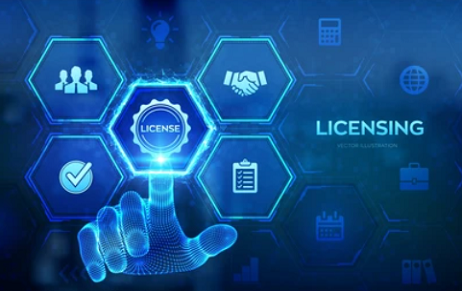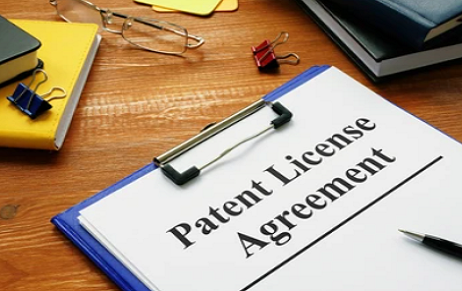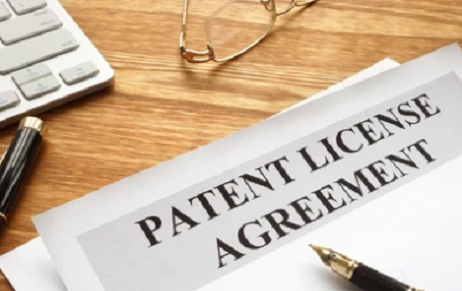Introduction Global licensing of patents has become a major aggregator in pushing growth of technology…
Patent Commercialisation Via Licensing
Intellectual Property refers to creations of the mind such as inventions, expressions in the form of literary and artistic works, symbols, names and images, etc used in commerce. It can further be divided into Industrial Property or Copyright[1]. Patent as a part of Industrial Property is an exclusive right granted for an invention – a product or process that provides a new way of doing something, or that offers a new technical solution to a problem[2].
According to 7 USCS § 178a, the term “commercialization” means “the stage in the development or advancement of a technology at which point private enterprise is willing to invest in a full-scale production facility”[3]. Even though the definition does not emerge from core intellectual property laws, it still sustains the bare minimum standards of the term.
An inventor places his invention[4], his creation in the highest of regards. The process of creation is highly intensive, both in terms of mental input along with investment of time and capital. As every investment, possession and every “real property” needs to be protected, the same concept goes with Patents as they are valuable to the inventor. After it is secured, the next stage of generation of returns can be considered. As every investment is made with a clear pre–intention for recovery of capital invested or profits, it is reasonable to find measures for optimum exploitation of Intellectual Property or in particular, Patents. The Indian Bayh – Doyle Act: Protection and Utilization of Public Funded Intellectual Property Bill, 2008[5] stands as an example of commitment by the country to provide protection and utilisation of Intellectual Property originating from public funded research[6].
Hence, commercialisation is important as it enables the inventor to seek its fair share from the society in exchange for disclosing his creation to the public at large. Commercialisation of a Patent that has been granted can be achieved in two major ways. It can either be assigned or licensed. Assignment of a Patent involves a complete transfer of ownership of Patent by virtue of a contract which is similar to sale of a “real property”. Analogy with lease of a real property can be drawn with licensing of Intellectual Property. By means of a license, ownership rights can be withheld while transfer of other rights can be precisely controlled. A greater degree of control that is conferred upon the licensor of the inventor by virtue of a licensing agreement, and hence it makes more sense as to why a licensor or an inventor must go for it in order to commercialise the patent.
In order to develop a license, it is necessary to determine the strategy followed. Patent licensing constituted following four major strategies:
- Carrot Licensing: When a patentee or the current holder(s) of Patent, proactively promotes and voluntarily makes an effort to license the Patent to potential parties who are under no compulsion to do so, such license is known as a carrot license[7].
- Stick Licensing: On the other hand, when a license is taken involuntarily, under a threat of suit for Patent infringement, by the infringer from the offended property owner, such license is classified as a stick license[8].
- Iron Fist in a Velvet Glove: Whereas, when a potential licensee undertakes a license under an impression that the owner might take a legal action, and such lawsuit will prove to be more expensive than taking out license, such licensing process is like “Iron fist in a Velvet Glove”[9].
- Joint Venture: When two or more parties enter into an agreement by means of which each party would be entitled to its own rights and obligations towards the venture agreed upon, this is termed as a joint – venture strategy.
For instance, if A, the inventor enters into a joint venture with B, a business that has potential to exploit the patent, it is evident that A will contribute by means of license to exploit the patent[10] whereas B will contribute by generating revenue from the patent and sharing a part of it with A. Hence, both the parties will be better–off if such joint venture takes place.
Licenses can also be classified to be as exclusive or non–exclusive depending upon the nature of the agreement between the parties:
- Exclusive license: An exclusive license is the one in which a licensee prohibits the licensor from licensing the patent to any other party.
- Non – exclusive license: In such cases, the licensor undertakes a lot of risk by limiting its income – source from a sole licensee and hence prefers to enter into non – exclusive licenses, where there can be multiple licensees. A non – exclusive license can further be sub – licensed[11] by the licensee, thereby making the offer more lucrative.
A license agreement basically undergoes two major steps for its completion:
- Documentation: Under Section 68 of The Patents Act, 1970, a license in a patent shall be valid when it is in writing and the agreement between the parties concerned is reduced to the form of a document embodying all the terms and conditions governing their rights and obligations and such agreement is duly executed[12].
- Registration: After the agreement takes place, the party that had acquired the license has to register the title or interest in the concerned patent within six months from the date of agreement. This registration process has to take place by the licensee by submitting application Form – 16[13], under section 69(1), 69(2)[14] read with rule 90(1) and 90(2)[15] in writing and has to be signed by both the parties[16].
There are, however, some restrictions that cannot be imposed upon the licensee by means of a license agreement or contract under section 140[17].
After various aspects of intellectual property, including patents, have been understood, the next stage is that of negotiation. The art of negotiation involves three major phases:
- Preparation phase: The first and the most important phase of license negotiation is the preparation phase. A lot of questions are required to be answered during this phase, such as: business aspect of license, best outcome for all parties, corresponding leverage for each party, stand on key issues, range and intention of compromise[18].
- Discussion phase: All the questions are then framed into issues the endures multiple rounds of discussion, until the parties are on the same page and begin to understand the contract in the same sense.
- Proposing and bargaining phase: Following the discussion phase, in the proposing phase, a final agreement is proposed by the licensor to the licensee, who in the bargaining phase puts forward a counter – offer.
Licensing is one of the most lucrative options for commercialisation of Intellectual Property, particularly with regard to patents. However, the art of licensing is tricky and consideration must be given to develop various aspects of license along with licensing strategies to be followed before drafting a final agreement.
Author: Madhur Tulsiani , Intern at Khurana & Khurana, Advocates and IP Attorneys. In case of any queries please contact/write back to us at [email protected].
References:
[2] (ibid).
[3]https://www.gpo.gov/fdsys/pkg/USCODE-2011-title7/pdf/USCODE-2011-title7-chap8A-subchapII-sec178a.pdf
[4] “Invention” under Section 2(j), The Patents Act, 1970, is stated as “a new product or process involving an inventive step and capable of industrial application”.
[6] http://iica.in/images/Technology%20Transfer%20and%20IP%20Commercialization.pdf
[7] http://s1.downloadmienphi.net/file/downloadfile4/206/1391165.pdf
[8](ibid)
[9](ibid)
[10] (ibid)
[11] The right to sub – license is a privilege accorded upon the licensee. The licensee acts as a sub – licensor. As a result, the licensee becomes responsible for effective and full compliance of the license by the sub – licensee and in case of default on the part of sub – licensee, the licensee shall stand responsible. Also, all sub – licenses granted stand terminated if the main license is brought to an end unless other conditions exist.
[13] http://www.ipindia.gov.in/writereaddata/Portal/IPOFormUpload/1_28_1/form-16.pdf
[14] (ibid)
[15]http://www.ipindia.gov.in/writereaddata/Portal/IPORule/1_70_1_The-Patents-Rules-2003-Updated-till-23-June-2017.pdf
[16] http://www.invntree.com/blogs/indian-perspective-licensing-or-sale-patents
[17] (ibid)
[18] http://www.wipo.int/edocs/mdocs/aspac/en/wipo_ip_han_11/wipo_ip_han_11_ref_t7b.pdf



